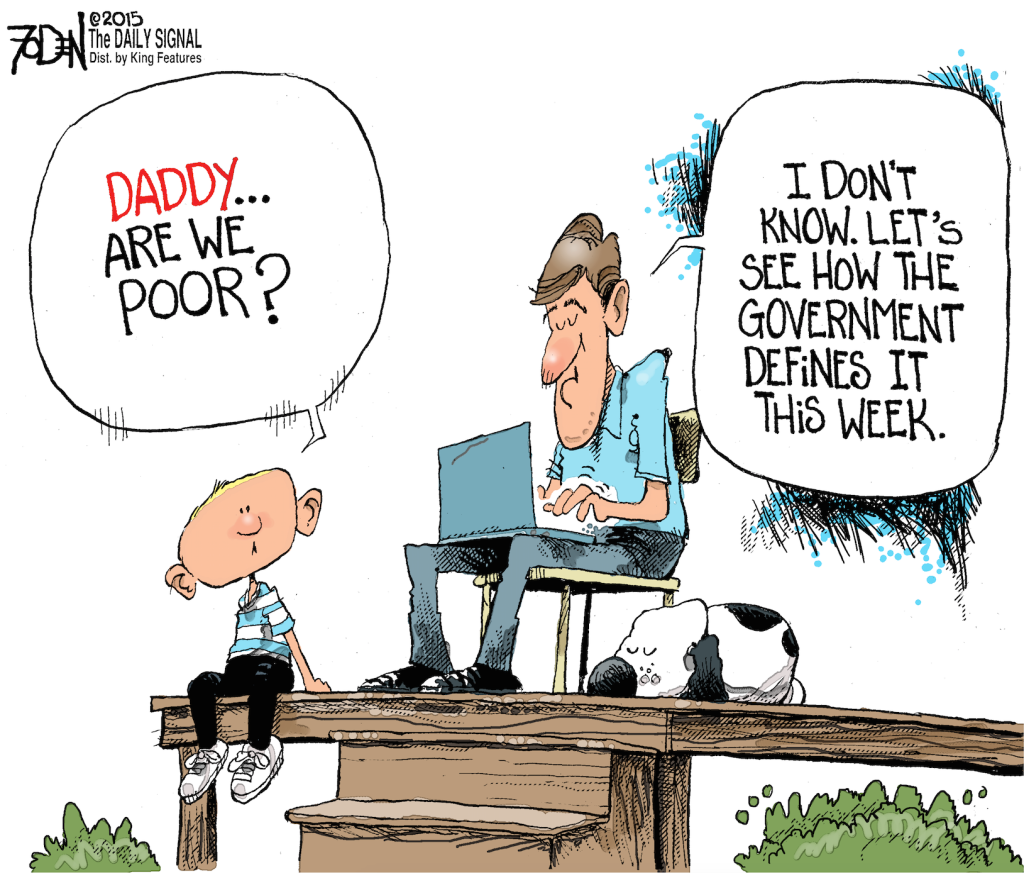
Senior research fellow Robert Rector wrote earlier this week on the Census Bureau’s poverty report:
Today, the Census Bureau will release its annual poverty report. It will almost certainly report that over 40 million Americans “live in poverty.”
But what does it mean to be poor in America? To the average American, the word “poverty” suggests significant material deprivation. But the actual living conditions of those the government defines as poor differ greatly from this perception.
>>> Read Robert Rector’s full report.
According to the government’s own reports, the typical American defined as poor by the Census Bureau has a car, air conditioning, and cable or satellite TV. Half of the poor have computers, 43 percent have Internet, and 40 percent have a wide-screen plasma or LCD TV.
Far from being overcrowded, poor Americans have more living space in their home than the average non-poor person in Western Europe. Some 42 percent of all poor households actually own their own homes; on average, this is a well-maintained three-bedroom house with one and a half baths, a garage, and a porch or patio.
According to the U.S. Department of Agriculture, only 4 percent of poor children were hungry for even a single day in the prior year because the family could not afford food. By its own report, the average poor person had sufficient funds to meet all essential needs and was able to obtain medical care for his family throughout the year whenever needed.
The left likes to claim that the U.S. has far more poverty than other advanced nations. But those claims are based on comparisons that set a higher standard for escaping poverty in the U.S. than elsewhere.
When a single uniform standard is used, the U.S. is shown to have poverty rates that are very similar to other advanced nations, slightly higher or lower depending on the exact measure used.
Misperceptions about widespread U.S. poverty are, in part, driven the Census Bureau’s consistently flawed poverty measurement. The Census Bureau defines a household as poor if its “income” falls below specific thresholds. (In 2014, the poverty threshold for a family of four was $24,008.) But in counting “income,” the Census Bureau excludes nearly all welfare benefits.
Last year, government spent over one trillion dollars on means-tested anti-poverty programs, but the Census Bureau counted less than five percent of this as “income” for purposes of measuring poverty. No surprise, then, that government’s own data show that the poor actually spend $2.30 for every $1.00 of income that the Census Bureau claims they have.
It is, of course, a good thing that left-wing charges of widespread deprivation in the U.S. are wrong. But we should not judge the welfare state merely by the volume of free benefits it distributes.
When President Lyndon Johnson launched the War on Poverty, he sought to decrease welfare dependence and to increase self-sufficiency: the ability of family to support itself above poverty without the need of government handouts.
By that measure, the War on Poverty has been a huge failure. Despite $24 trillion in anti-poverty spending, self-sufficiency has not improved in 45 years.
Public assistance should aim at Johnson’s original goal: promoting self-sufficiency.
The keys to self-sufficiency are increased work and marriage.
Able-bodied recipients of welfare aid should be required to work or prepare for work as a condition of receiving assistance. Welfare programs should encourage, not penalize, marriage.
Reforming the welfare system on those principles would be good for the poor, the taxpayer, and the nation as a whole.




























